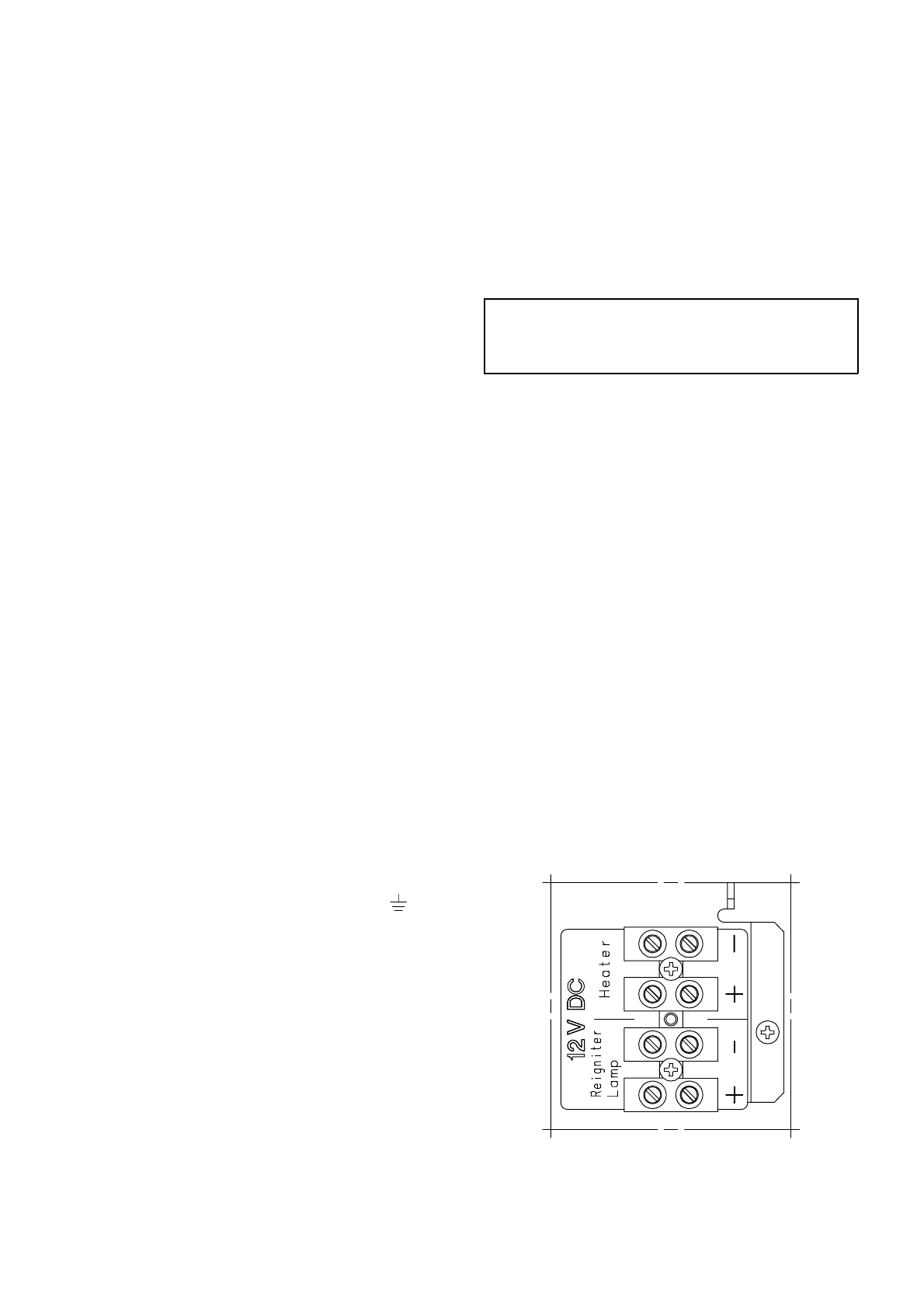
It must be of a type approved for use with continuously
operating bottled gas appliances, and have threaded
compression connections throughout. PUSH-ON CON-
NECTIONS MUST NOT BE USED (We do not recom-
mend the use of "rubber" type flexible tubing for
connecting permanently operating appliances of this
type in the United Kingdom). All connectors etc. should
be of a type specifically designed for the type and
diameter of the connection pipe used, and screwed
joints should be sealed with a joining compound approved
for use with bottled gas.
The gas supply pipe should be connected to the gas inlet
pipe (outside diameter 8 mm) by means of a suitable
gas-tight compression fitting, e.g. olive.
In making the connection to the refrigerator, a union gas
cock of an approved type bottled gas must be incorpo-
rated in the supply line in a position which is readily
accessible to the user. For eventual servicing purposes,
the union should be on the outlet side of the cock and
the pipework should be positioned so as not to prevent
the refrigerator from being readily withdrawn.
On completion of installation, the system must be
pressure tested by a qualified technician.
ELECTRICAL CONNECTION
The electrical installation must be carried out in a proper
and durable manner; taking into accounts all relevant
regulations and codes of practice. For mains voltage
operation, it is important that the circuit to and in the
caravan is effectively earthed.
For connection to a 230-240 V electricity supply, the
refrigerator has a 3-core mains lead which is intended
for connection to a properly earthed plug and socket
outlet. The socket outlet should be fitted in the caravan
in a position readily accessible to the user, within reach
of the mains lead. In the United Kingdom, the plug and
socket outlet should be of the non-reversible type.
As the colours of the wires in the mains lead of this
appliance may not correspond with the coloured mark-
ings identifying the terminals in your plug, proceed as
follows:
- the wire which is coloured Green and Yellow must be
connected to the terminal in the plug which is marked
with the letter E or by the earth symbol , or
coloured Green or Green and Yellow,
- the wire which is coloured Blue must be connected to
the terminal which is marked with the letter N or
coloured Black,
- the wire which is coloured Brown must be connected
to the terminal which is marked with the letter L or
coloured Red.
WARNING- THIS APPLIANCE MUST BE EARTHED
IMPORTANT
The wires in this mains lead are coloured in accordance
with the following code:
- green/yellow: earth
- blue: neutral
- brown: live
In the United Kingdom, the plug or circuit to the refriger-
ator must be fitted with a fuse not greater than 5 amps.
If a 13 amp. (B.S. 1363) fused plug is used, it should be
fitted with a 3 amp. fuse, ASTA approved to B.S. 1362.
In other countries, the fuse rating will depend upon the
voltage and local practice.
230-240 V Supplies.
Check that the voltage stated on the data plate is the
same as the main voltage in use (230-240 V).
Plug the 230-240 V refrigerator power cord into an easily
accessible wall socket.
Electrical leads must be routed and secured so
that they cannot come into contact with hot or
sharp parts of the refrigerator.
12 V Supplies
The 12 V connection of the refrigerator is shown in fig. 4.
Connect the refrigerator to the vehicle battery or alter-
nator by a direct cable, (check the polarity).
The connection is made to the terminal block (fig. 4
"Heater"). To avoid a voltage drop, the cross section area
of the connecting cable between battery/alternator and
the refrigerator must be 10 mm
2
.
To ensure satisfactory operation, the positive lead must
be fitted with a fuse rated at max. 20 A.
To prevent the refrigerator from draining the battery,
make sure that the current supplied to the caravan is cut
off when the vehicle engine is not running, for example
by fitting an ignition control relay.
12 V supply of reigniter and interior light
The reigniter and the interior light must be connected to
a separate 12 V battery.
Connect the battery to the terminal block (fig. 4 "Reigni-
ter, Lamp"). Be careful not to make the wrong positive
and negative connections.
The reigniter should not be connected directly to a
battery charger but only over a battery.
FIG. 4
17












